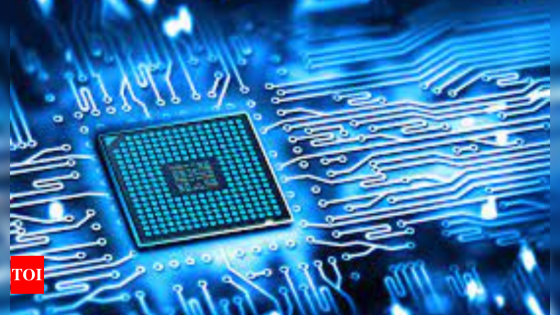NEW DELHI: The multi-material semiconductor fabrication unit to be set up in India as a result of the agreement between New Delhi and Washington during PM Narendra Modi’s recent visit to the US will roll out chips that will cater to the national security needs of the two countries.
The new plant, likely to come up in Uttar Pradesh’s Jewar, near the upcoming international airport, will supply advanced chips to the US armed forces, allied militaries and Indian defence forces.
The cutting-edge semiconductor plant will produce chips for advanced warfare technologies, including night vision devices, missile-seekers, space sensors, drones, fighter jets, electric vehicles, military communications, radars and jammers.
The plant will include a testing center, a centre of excellence, a design hub and two fabrication units. This initiative is part of growing India-US cooperation under the Indo-Pacific Economic Corridor (ICET) and the CHIPS Act, aimed at strengthening semiconductor manufacturing capabilities.
Addressing the diaspora in New York after the key US pact, Modi indirectly referred to the semiconductor unit agreement as he said: “The day is not far when you will see made-in-India chips in America. This small thing will take India to another level. And this is Modi’s guarantee.”
Besides high-tech defence equipment, semiconductors made here can be used in railways, electric vehicles and smart toll systems.
The US security establishment has relied its trust on an Indian startup, led by two young entrepreneurs, Vinayak Dalmia and Vrinda Kapoor, with technology to produce chips that will feed America’s security infrastructure as well as aid its allies.
The startup, 3rdiTech, is collaborating with General Atomics, a US defence major, on a series of significant projects to boost defence technology capacity in India. The manufacturers aim to produce 50,000 units every year to start with phase 1.
The collaboration between US Military, Bharat Semi and 3rdiTech will make India one of the few countries in the Indo-Pacific besides China, which will have the capability to make complex compound semiconductors.
The manufacturing unit will primarily make infrared, gallium nitride, silicon carbide semiconductors. While traditional semiconductors use one material that is silicon, compound semiconductors use two or more materials. Around 80% of the world’s semiconductors use silicon and only 20% are compound semiconductors.
However, compound semiconductors can handle more power than silicon semiconductors and are 100 times faster.
At present, India imports one billion dollars worth of compound semiconductors for defence needs on an annual basis. Once this plant comes up, India’s reliance on imported chips will come down drastically.
Though the company is likely to consider selling semiconductors to electric vehicle companies, 5G and 6G applications, and other technology sectors, the first priority for the initial period will be to supply semiconductors to meet the needs of the Indian and American defence forces.
The joint fact sheet also has another declaration in the semiconductor sector as Modi and US President Joe Biden praised “combined efforts to facilitate resilient, secure and sustainable semiconductor supply chains, including through GlobalFoundries’ (GF) creation of the GF Kolkata Power Centre in Kolkata”.
This centre is expected to “enhance mutually beneficial linkages to research and development in chip manufacturing and enable game-changing advances for zero and low emission as well as connected vehicles, internet of things devices, AI and data centres”.
Source Agencies



